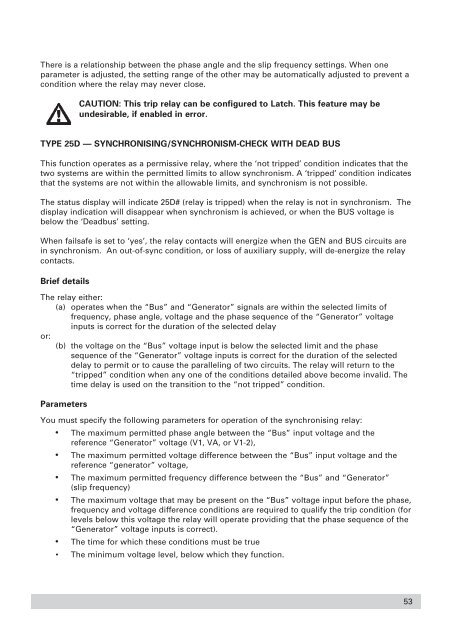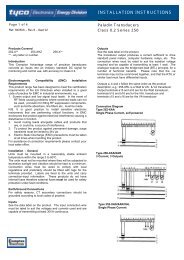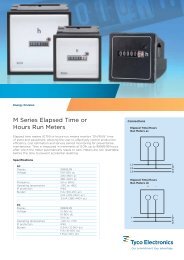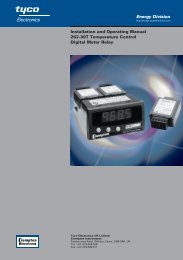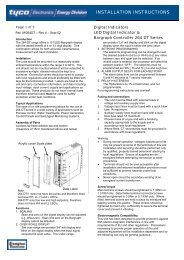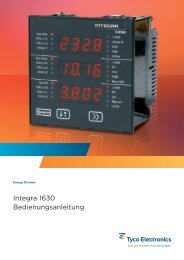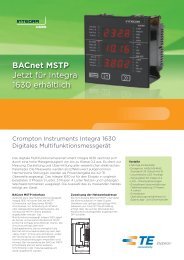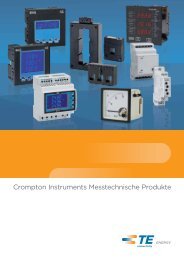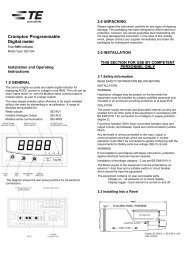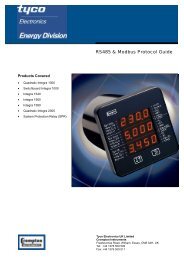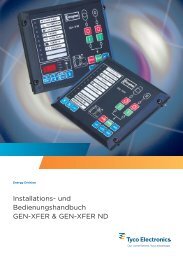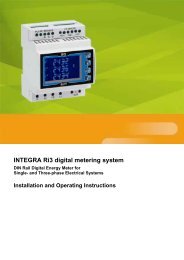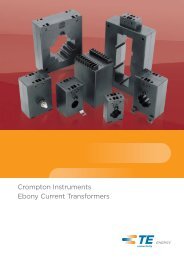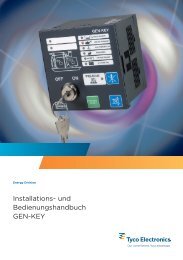Installation and Operating Instructions - Crompton Instruments
Installation and Operating Instructions - Crompton Instruments
Installation and Operating Instructions - Crompton Instruments
You also want an ePaper? Increase the reach of your titles
YUMPU automatically turns print PDFs into web optimized ePapers that Google loves.
There is a relationship between the phase angle <strong>and</strong> the slip frequency settings. When one<br />
parameter is adjusted, the setting range of the other may be automatically adjusted to prevent a<br />
condition where the relay may never close.<br />
CAUTION: This trip relay can be configured to Latch. This feature may be<br />
undesirable, if enabled in error.<br />
TYPE 25D — SYNCHRONISING/SYNCHRONISM-CHECK WITH DEAD BUS<br />
This function operates as a permissive relay, where the ‘not tripped’ condition indicates that the<br />
two systems are within the permitted limits to allow synchronism. A ‘tripped’ condition indicates<br />
that the systems are not within the allowable limits, <strong>and</strong> synchronism is not possible.<br />
The status display will indicate 25D# (relay is tripped) when the relay is not in synchronism. The<br />
display indication will disappear when synchronism is achieved, or when the BUS voltage is<br />
below the ‘Deadbus’ setting.<br />
When failsafe is set to ‘yes’, the relay contacts will energize when the GEN <strong>and</strong> BUS circuits are<br />
in synchronism. An out-of-sync condition, or loss of auxiliary supply, will de-energize the relay<br />
contacts.<br />
Brief details<br />
The relay either:<br />
(a) operates when the “Bus” <strong>and</strong> “Generator” signals are within the selected limits of<br />
frequency, phase angle, voltage <strong>and</strong> the phase sequence of the “Generator” voltage<br />
inputs is correct for the duration of the selected delay<br />
or:<br />
(b) the voltage on the “Bus” voltage input is below the selected limit <strong>and</strong> the phase<br />
sequence of the “Generator” voltage inputs is correct for the duration of the selected<br />
delay to permit or to cause the paralleling of two circuits. The relay will return to the<br />
“tripped” condition when any one of the conditions detailed above become invalid. The<br />
time delay is used on the transition to the “not tripped” condition.<br />
Parameters<br />
You must specify the following parameters for operation of the synchronising relay:<br />
●<br />
The maximum permitted phase angle between the “Bus” input voltage <strong>and</strong> the<br />
reference “Generator” voltage (V1, VA, or V1-2),<br />
●<br />
The maximum permitted voltage difference between the “Bus” input voltage <strong>and</strong> the<br />
reference “generator” voltage,<br />
●<br />
The maximum permitted frequency difference between the “Bus” <strong>and</strong> “Generator”<br />
(slip frequency)<br />
●<br />
The maximum voltage that may be present on the “Bus” voltage input before the phase,<br />
frequency <strong>and</strong> voltage difference conditions are required to qualify the trip condition (for<br />
levels below this voltage the relay will operate providing that the phase sequence of the<br />
“Generator” voltage inputs is correct).<br />
●<br />
The time for which these conditions must be true<br />
• The minimum voltage level, below which they function.<br />
53


